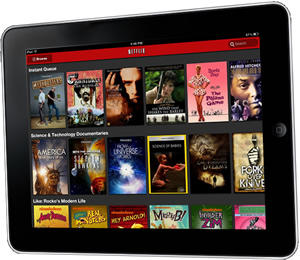Opportunities and Threats
Opportunities
Netflix has become a synonymous brand with internet streaming of television content and movies. It can capitalize on this brand recognition to grow its business globally. The Netflix service is pure, as that it does not bundle streaming with other products to frustrate customers by bogging them down with unwanted product offerings.
The focused strategy gives it more resources to deliver quality improvement strategies and exceed customer expectations. The good performance of its shares gives the company an opportunity to raise more funds by selling more shares and using the funds to grow its content portfolio (Taylor par. 3-4).
Threats
The company is unable to monitor the intricate details of its service delivery. It relies on internet service providers to offer broadband speeds for streaming. Thus it cannot handle internet service disruptions. It faces a great risk and uncertainty on whether customers will understand the separation of quality obligations between Netflix and ISPs.

Content liabilities threaten Netflix’s financial future. When the company is unable to pay for the content, it will jeopardize its credit situation and miss new content from content providers (Bylund par. 3). Its competitors can, therefore, easily displace Netflix as a content leader in the streaming business (Thompson 1).
Near future trends in the marketplace and society
The growth of mobile device technologies, such as high definition displays on tablets and smartphones, presents a good opportunity for Netflix’s increased demand. Televisions are also becoming internet ready, allowing people to stream directly to their TVs, instead of relying on computers. Gadgets, such as Chromecast, which deliver internet content to televisions through HDMI connection, also increase the number of accessible avenues for Netflix to reach consumers (Netflix par. 2).

The prevalence of internet devices reduces the anxiety of taking up a service that is only available when there is internet (Wirtz, Chew, and Lovelock 34).
Future trends
Content producers who currently rely on companies like Netflix and cable providers to distribute their content will come up with their streaming services. This will not be competing against the current services, but a diversification strategy that gives them an upper hand in negotiating terms with distributors.
Netflix and other distributors like Amazon will also have a substantial investment in content production to mitigate this threat. As a result, there will be a blurring of the nature of business between the producers of content and the distributors. On the customer’s side, the substitutability of services will increase choices and reduce switching costs. It will take longer for a business like Netflix to break even, as its marketing expenditures increase amid the additional competition.
Firms will invest more in the analysis of consumer trends to find out viewing patterns and intentions. The presence of mobile phones and tablets during viewing will make them the co-creators of television experience and redefine the traditional ways of consuming movies and television programs.
Customers are becoming internet savvy, and they can find out information about products before they purchase. The number of mobile phone applications for increasing purchase-related information and product analysis information will increase. The market for streaming services is, therefore, going to be more open.
Barriers to entry will remain low. Websites that currently offer user-uploaded content will allow individuals to form dedicated channels and sell them as premium content to compete directly with services like Netflix (Neal par. 2-5). The prices of streaming services will have to tumble as competition increases.
Buyouts may become the preferred way of acquiring capacity and competitive advantages to reduce the business adaptability to the changes in consumer preferences. When users and competition increase, the segmentation of the market based on content will equally increase to match similar trends witnessed in the cable television industry a few decades ago.
Works Cited
Bylund, Anders. “Netflix Content Costs — Visualized!” 2014. The Motley Fool.
Neal, Ryan. “YouTube: Premium Content Channels To Charge Paid Monthly Subscription Fee.” 2013. International Business Times. Web.
Netflix. “Post-Play on Google Chromecast.” 2014. Netflix. Web.
Taylor, Josh. “Austalian streaming services lock down content before Netflix.” 2014. ZDNet. Web.
Thompson, Athur A. “Netflix in 2012: Can it Recover From Its Strategy Missteps?” 2012. Web.
Wirtz, Jochen, Patricia Chew, and Christopher Lovelock. Essentials of Services Marketing, 2nd edition. Upper Saddle River, NJ: Pearson Education, 2012. Print.